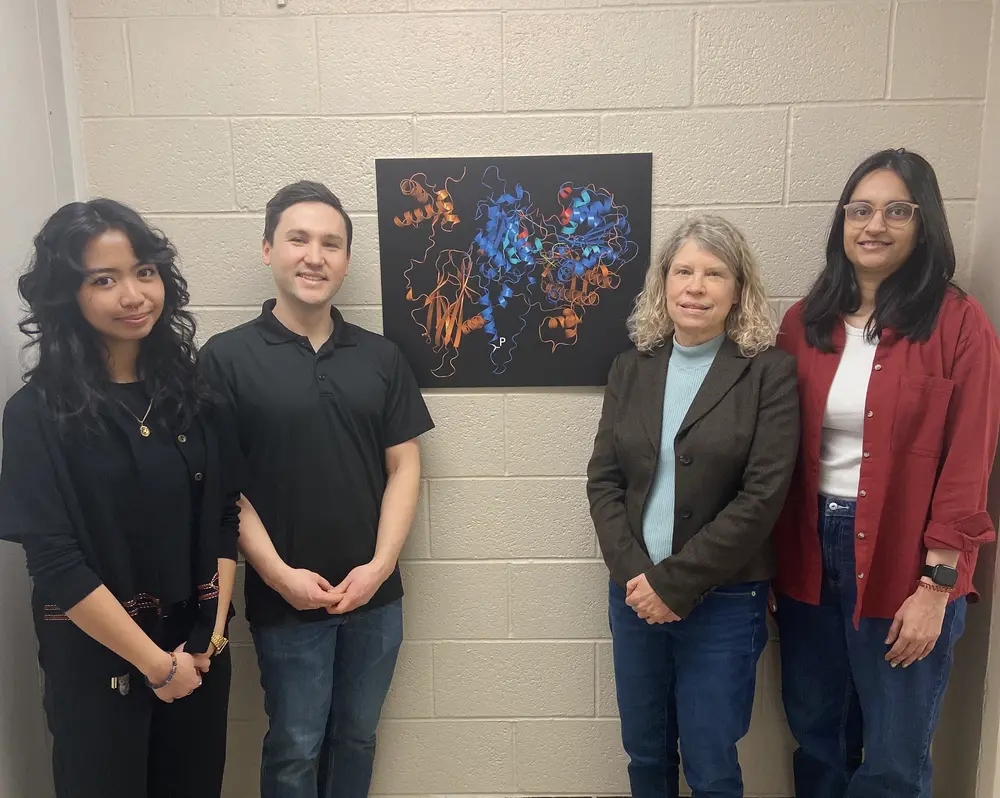
Researchers from the University of Illinois have identified an RNA binding protein called MOV10 as a critical factor in memory formation and learning. Their findings, published this month in BMC Biology, will enhance scientists’ understanding of brain development and fear memory.
The hippocampus is a small component of the brain essential for memory formation. Within the hippocampus are networks of neuronal structures called dendrites, which receive signals from other neurons through axons. Where two neurons connect is called a synapse, junctions at which learning and memory form. The branching of these dendrites — or dendritic arborization — is closely tied to fear memory, in which a traumatic event elicits the fear of recurrence.
Stephanie Ceman, a professor of Cell & Developmental Biology, wanted to examine the mechanisms behind fear memory.
“Some people with autism, anxiety, and PTSD have enhanced fear memory, and it’s a huge problem,” Ceman said. “If you’ve ever had a phobia, it’s not a fun thing, especially if you’re anticipating a panic attack. When you live through something horrible, the memory can be paralyzing. As scientists, how do we think about that?”
In previous research studying Fragile X, the most common form of inherited intellectual disability, Ceman focused on the protein FMRP. Through this prior research, she uncovered an association between FMRP and RNA helicase MOV10. Curious about MOV10’s role in cognitive development, Ceman decided to inactivate its gene in mice, expecting impaired learning and memory, which occur when FMRP is disrupted. To her surprise, animals with the inactivated MOV10 gene displayed enhanced fear memory.
“When we knocked out MOV10 we got something very different than Fragile X,” Ceman said. “The result was unexpected, but that’s the way science goes and what makes it interesting.”
To pin down the mechanism behind MOV10, Ceman and her lab looked at hippocampal neurons, which revealed increased dendritic arborization and altered branching patterns. These deviations from normal dendritic networks contributed to the subjects’ inability to forget. Additionally, the lab highlighted MOV10’s importance in the microRNA pathway.
“When other researchers have knocked out the microRNA pathway in the brain, they’ve seen enhanced memory,” Ceman said. “And that’s important because MOV10 is an RNA binding protein that interacts with both FMRP and the microRNA pathway. So when we knocked out MOV10 we didn’t know how it would behave. The brain could have been cognitively impaired because of its reliance on the FMRP pathway, or it could have shown enhanced memory because of its involvement in the microRNA pathway.”
MOV10’s newly discovered relationship with the microRNA pathway opens the door to further questions.
“The brain is something we all think about,” Ceman said, “Why do we do this, or why are we afraid of that? MOV10 being part of the microRNA pathway is going to control the expression of a large subset of genes. Now we want to know what it’s turning off and on, and why. Those will be future areas of work.”
Going forward, several research groups will collaborate on imaging projects to further examine these pathways. Ceman is working with Daniel Llano, a professor of Molecular & Integrative Physiology, to examine the electrical properties of hippocampal neurons and with the Beckman Institute's Biomedical Imaging Center to image the brain connectivity that underlies the enhanced fear memory.
“We’re hoping that because there is this very specific domain of fear memory, we can look at those connections in the brain,” Ceman said. “We know cytoskeleton plays a role in how those connections are made, but a lot is left to be learned about everything our brain does and why it functions differently in different people.”
